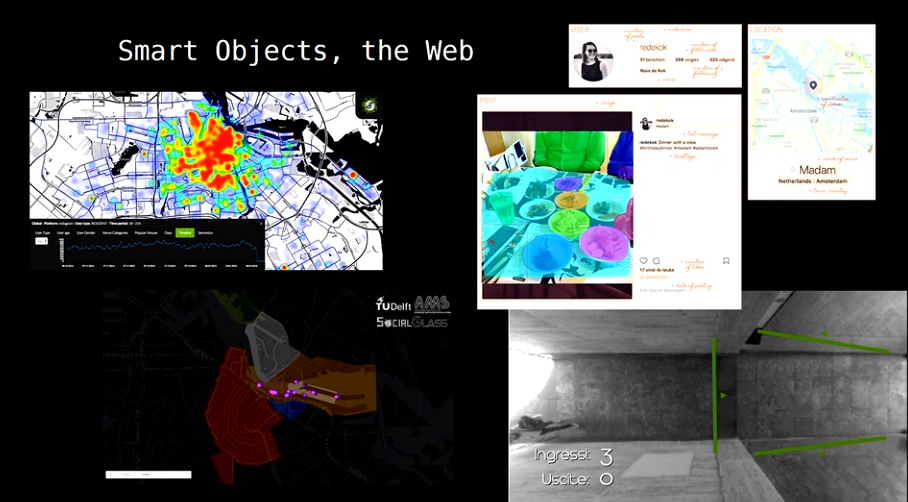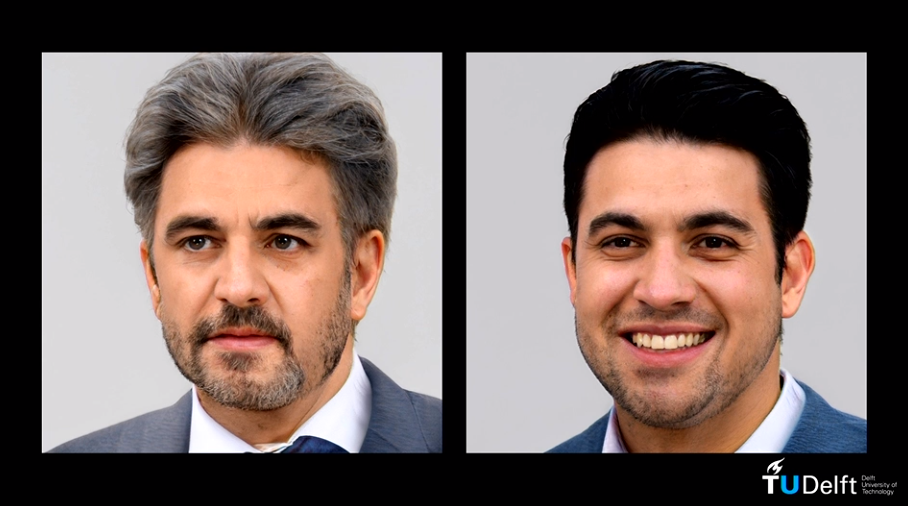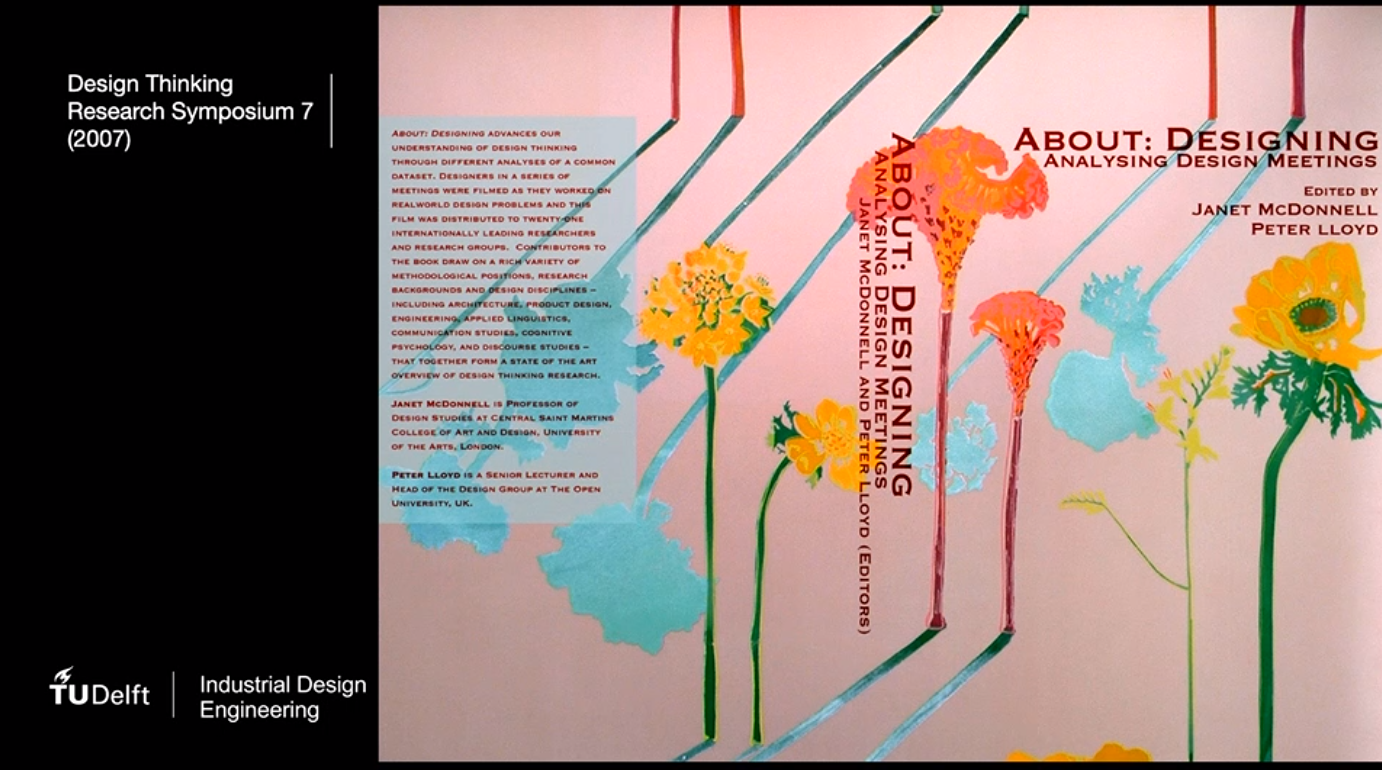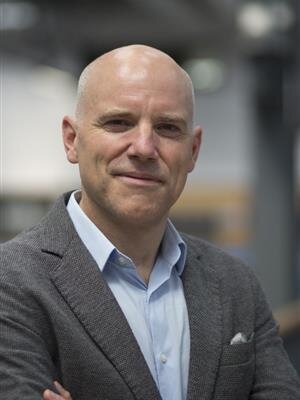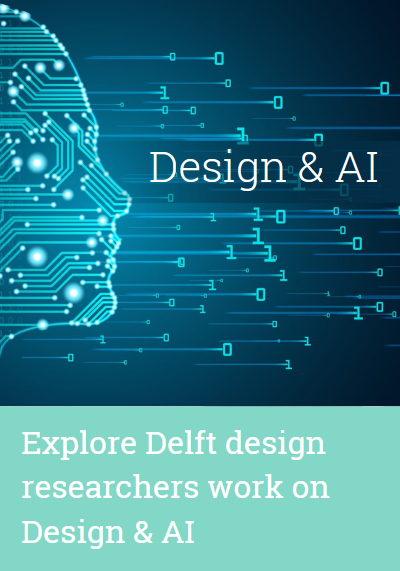Image above: Finlay Moorehouse, finmoorhouse.com
ARTIFICIAL INTELLIGENCE
Dual inauguration
ALESSANDRO BOZZON AND PETER LLOYD
Loops of intelligence
How the co-evolution of humans and AI can design our future
In a world of bits and bytes what is the role of design? On September 10 2021, Professor Alessandro Bozzon and Professor Peter Lloyd used the occasion of their inaugural lectures to explore “how the co-evolution of AI and humans can design our future.”
Loops of Intelligence
Human-Centered Design and Control of Artificial Intelligence Systems by Alessandro Bozzon

Stupid Computers and Smart Objects
As a child of the eighties, like many children, Professor Alessandro Bozzon enjoyed playing video games and watching TV. For the young Alessandro, there was one programme – indeed one character - that caught his attention: KITT, or Knight Industries Two Thousand. “I loved that car. I believed it existed. I dreamt about working together with KITT to save the world. That is how I believed the future would be. Filled with computers, as intelligent as ourselves, embedded in everyday objects like cars. And we would partner up with these objects to create a better and just world.”
The vision of the future, as espoused in ‘Knight Rider’, has - in some respects - come to pass. Today we are living in a world of intelligent objects: smart phones, smart TVs, smart speakers, even $200 smart hairbrushes. These objects are smart because “their operation is enabled or supported by some form of Artificial Intelligence” mimicking human capabilities. They are “cognified extensions of ourselves.” But just how smart are they?
The form of intelligence emerging from machine learning, is something that Professor Bozzon scrutinises in his inaugural lecture. He recalls the words of his high school principal who queried his decision to pursue computer science, remarking that “computers are stupid.” This indictment made no more sense to the young Alessandro, than it does to the learned academic today. After all, computers and the AI they engender is a bi-product of the data, and of the people producing or annotating such data. Bozzon neatly sums it up with a phrase used in computer programming: “Garbage in, garbage out.”
The hardest problem in Computer Science? People
In the eyes of Bozzon, we need to focus attention less on the aforementioned smart hairbrushes and far more on “the real source of AI intelligence: the people”. Humans are at once the consumers of “AI” products but we are “also the producers and refiners” – something which is not only “unprecedented” but a challenge to the “understanding of what it means to means to design a product, a service, or a system. Or how to control it.”
Small wonder then that Professor Bozzon - a computer scientist first and foremost - has chosen to base himself in TU Delft’s Faculty of Industrial Design Engineering – a research and education institute that prides itself in matching the revolution of technology with the evolution of people. Together with his research group and with the involvement of thousands of people from all over the world, Bozzon is investigating Artificial Intelligence from the perspective of people – across the domains of health, mobility, sustainability and cultural heritage. He is working not only with fellow computer scientists, but in close collaboration with designers, public health professionals, civil servants, innovation experts and archivists. The work of Bozzon and his group is empirically demonstrating the importance of a human-centered approach to the design of processes and systems that facilitate the creation of high-quality data that is fit for purpose. They have shown that everyone’s personal qualities matter - even in data sets of thousands. They have also shown that single person’s expertise (or lack of it) can dramatically impact the performance of very complex AI systems. And that the issue of clarity and cognitive complexity in the design of data creation and annotation jobs can generate errors and biases that can, in a later stage, generate undesired behaviours.
The research of Bozzon and his group spans the domains of health, mobility, sustainability and cultural heritage.
Facing the design challenge
At the entrance to TU Delft’s Aula auditorium, - the setting for Bozzon’s inaugural lecture - hung two photos. On the left a photo of a grey-haired man with a serious expression, on the right, a dark-haired man - seemingly with something to smile about. Before taking a seat, each guest was handed a plastic token and asked to cast their vote: which man would you like to work with the most?
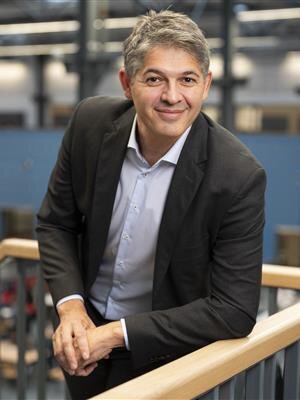
Alessandro Bozzon
- +31 (0)15 27 87822
- a.bozzon@tudelft.nl
- Personal website
-
Room B-3-370
Working days: M T W T F
"Twenty years from now you will be more disappointed by the things you didn't do than by the ones you did do."
The live audience prefer the older, more serious looking face (a face itself generated by AI). The data that could in turn be used to help train machines to associate certain facial expressions with relevant character traits, like trust. This hypothetical but not implausible case - created for the purposes of the lecture - is the source of deep concern for Bozzon : “A face cannot capture the character, the intentions, the history of a person. Obviously. People are gloriously complex. Failing to acknowledge this simple reality, and to follow these principles will inevitably lead to discriminations, injustices and harm. No matter how good the design intentions.”
For Bozzon, this is a good example of the trade-off that science and engineering have to make between fidelity and tractability when operationalising theoretical constructs. “Models, including the AI ones, are always simplifications of the reality they seek to represent. If this approximation causes conflicts or issues, then fidelity has precedence over tractability. Or at least it should.”
This is again the point where design comes in to play: “designers, traditionally seen as gatekeepers of users’ needs and desire, are positioning themselves as gatekeepers for society and the environment. And therefore I believe they could play a central, leadership role in stewarding the evolution and use of a technology like Artificial Intelligence, that has so much potential for good, but also great potential for harm.”
Over the coming years, by embedding his work in TU Delft’s design faculty, Professor Bozzon hopes to develop education to make future designers aware of AI as a new type of design material – beyond the hype. He hopes to use AI to design for societal good and well-being and advance the design methodologies to make optimum use of this new design material. In short, he wants to design the right AI and design AI right.
Loops of Intelligence
Designing Intelligence: Creativity for a Complex World by Peter Lloyd
Warning: this lecture has been designed in collaboration with AI and takes some artistic licence.

Even before Professor Peter Lloyd stepped on stage, there was the sense that this would be a different sort of lecture. For the attentive listener, music in the intermezzo was the giveaway. “It’s Christmas time and you know what that means,” sang a slightly crackly Frank Sinatra. Puzzled members of the audience looked at each other, wondering if someone had inadvertently pressed the wrong button. Before things got terribly awkward an explanatory slide appeared: this crackly and unseasonal recording was not Old Blue Eyes at all. It was a (not entirely unconvincing) recording of an AI, performing lyrics co-written by a language model and OpenAI researchers. So far, so uncanny.
Then, Professor Lloyd took to the stage, starting his lecture by defining his terms: “What is intelligence? This might be the simplest part. There are two ways in which intelligence can be measured. One is intelligence within the individual. Within a species, intelligence can be measured by the level of cooperation.”
But before the meaning of these words could truly land, Lloyd wrong-footed his audience once again: “It’s not a bad start to an inaugural lecture on designing intelligence, but it’s not the one that I came up with. This is text that was generated by an AI system using the first eight words as a prompt. The AI produced the rest, but a human speaking it gives it a social resonance.” But what of Professor Lloyd’s view? As he sees it using Artificial Intelligence in a creative process produces surprising and unexpected results.
The fractal like nature of designing
Image: Finlay Moorehouse, finmoorhouse.com
To understand how AI and designers might possibly form a creative partnership, one first needs to understand the nature of design. Lloyd, inspired by the American philosopher and educationalist, Donald Schon’s description of designing “as a process of reflective practice” spoke of the fractal nature of designing: “that is to say, if you look at the individual parts of the design process, they look very similar to the whole design process.” As Lloyd observed during his work as a PhD student trying to understand the design process of engineers and architects, “designing is a process that occurs at many different levels. At one level, designing occurs second-by-second as designers especially, but perhaps many other non-designers too, work out the possibilities of what could be a problem situation they find themselves in. At another level the same basic process can take weeks, months, or even years, as organisations, institutions and governments work out how the emergent needs of populations and stakeholders can be addresses in organisational level and societal level responses.
Designing is a social activity
Design Thinking Research Symposium 7 (2007)
Professor Lloyd is emphatic about the social nature of designing. It’s “dependent on any number of people from all corners: experts, non-experts, formgivers, engineers, marketeers, manufacturers. Sometimes in conflict but working in collaboration to realise a solution.” In this context, design methods – one of the unique features of industrial design engineering education at Delft and Professor Lloyd’s area of expertise – help designers “objectify by externalising what often remains intuitive and implicit. […] The aim of a design method is to make your working transparent and invite discussion.” For Lloyd, design methods also embody a kind of knowledge “knowledge that is disseminated not through research pagers, but through the doing of design: a practice-based, process-based knowledge. It is this kind of knowledge that forms the basis of design thinking.”
Delft, along with Stanford University, can claim to have played a significant role in developing the idea of design thinking to the point where it grew in popularity around 2008. Since that time, according to Lloyd, it “effectively translated designing into an accessible process equipped with methods to tackle many different kinds of problems far outside what we normally would consider to be design disciplines.” Design thinking methods are now being used at executive level, helping reframe and develop organisational strategy. Lloyd refers to a recent graduation student who investigated how a not-for-profit foundation, based in the Amazon, might use design thinking to create a human-centered policy design process, which in turn would help reach sustainable development goals. As Lloyd observes: “it’s a long way from designing helmets for skateboarders.”
Designing with AI
When Professor Lloyd started out as a researcher, he collected VHS tapes of designers designing. Laboriously, he would transcribe the tapes at a rate – he recalls – of about 10 hours per 1 hour of footage. Today, thanks to AI-powered transcription, the same task takes 5 minutes. 5 minutes, plus an extra hour for editing out the idiosyncrasies, when the computer doesn’t recognise a word or phrase. A case in point is the name of the American philosopher and educationalist Donald Schon, which the AI transcribes variously as ‘double shown’, ‘does not show’ and – Lloyd’s favourite – ‘donut show’: “Donut show is funny, like the dreams of a schoolkid.” Indeed, for Lloyd, donut show can be seen less as an error and more as a “the algorithm expressing a kind of creativity”, which in turn inspired one of Lloyd’s PhD students to create a video of a “smart” device encountering a supermarket shelf full of donuts.
But as well as a spark for creative thinking , Lloyd sees AI as playing a role in his field of expertise: design methods That’s why, together with fellow TU Delft researchers, Senthil Chandrasegaran and Catharine Oertel, Lloyd has established the Designing Intelligence Lab. Here they are getting designers to talk with robots and chatbots to aid and enhance their design process and are building new methods and tools of design using AI to build reflective capabilities and support designers in creatively meeting their goals. Lloyd concludes on a positive note for the use of AI: “AI represents a technology with the potential to help designers go beyond their intuitions to better understand the world in which they design, and the people they are designing for.”
AI and design have a long history together. Originally this was to try to understand and model the complex cognitive ability of designing, but as I’ve described, designing is much more than a cognitive ability. How can we model a socio-cognitive capability? Or is this the wrong question?
Prof. dr. Peter Lloyd


